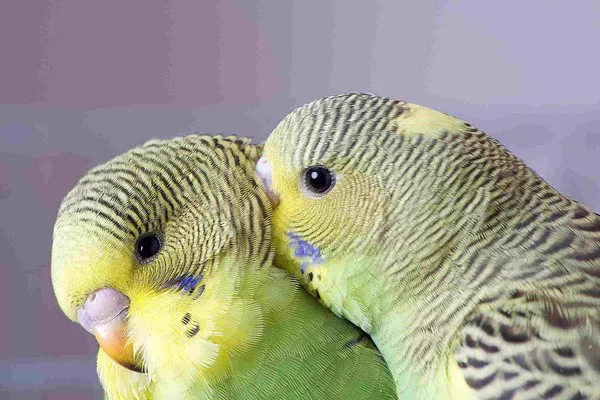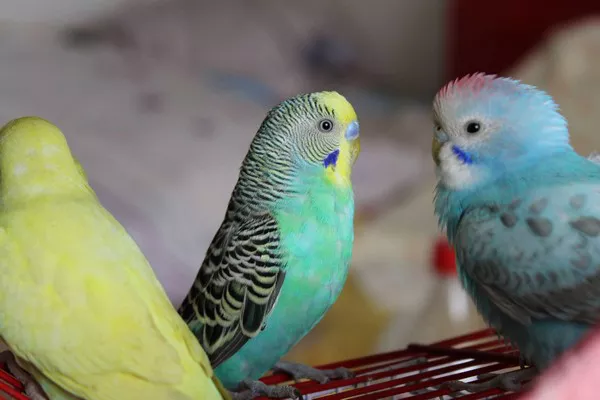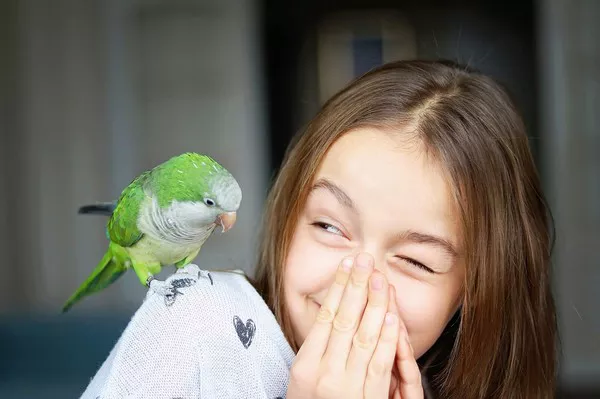Betta fish, scientifically known as Betta splendens, are among the most popular and beloved aquarium fish worldwide. Known for their vibrant colors and distinctive personalities, these fish have captivated aquarists for generations. However, a common question that arises among those considering Betta fish as pets is, “How big do Betta fish get?” Understanding the growth scale of Betta fish and providing appropriate care, including the right food, is essential for keeping these beautiful creatures healthy and happy. In this comprehensive article, we will explore the growth stages of Betta fish, factors affecting their size, and offer valuable food suggestions to promote optimal growth.
1. The Betta Fish: An Introduction
Before delving into the growth scale of Betta fish, it is essential to understand the basics of these remarkable creatures. Betta fish are native to Southeast Asia and can be found in shallow waters, including rice paddies, ponds, and slow-moving streams. These fish are known for their labyrinth organ, which allows them to breathe air at the water’s surface, a feature that distinguishes them from many other fish species. They exhibit a wide range of coloration and fin types, making them a favorite choice for aquarists who appreciate variety in their tanks.
Betta fish are known for their aggressive nature, and they are often referred to as Siamese fighting fish due to their territorial behavior.
Males, in particular, are prone to aggression towards other males and should be kept separately in their own tanks to prevent fighting. Female Betta fish tend to be less aggressive and can sometimes be housed together in groups, though it’s important to monitor their interactions.
2. Understanding the Growth Scale
Betta fish, like all living creatures, undergo a growth process. To better understand the growth scale of Betta fish, it’s important to consider various factors that influence their size and rate of growth. Here are some key elements to consider:
2.1 Genetics
Genetics play a significant role in determining how big do Betta fish get. Different Betta varieties, such as plakat, half-moon, crown tail, and more, have varying growth potentials. Breeders select for specific traits, including fin type and coloration, which can impact the size of the fish. Some Betta varieties are naturally larger than others, and this genetic predisposition can influence their ultimate size.
2.2 Gender
Gender is another crucial factor in Betta fish growth. Male Betta fish tend to be larger than their female counterparts. Male Betta fish can grow up to 2.5 to 3 inches (6.35 to 7.62 cm) in length, while females usually reach around 2 to 2.25 inches (5.08 to 5.72 cm). However, it’s worth noting that the size of Betta fish can vary among individuals, and there are exceptions to these general guidelines.
2.3 Diet and Nutrition
Diet and nutrition are fundamental factors that influence the growth of Betta fish. Feeding your Betta a balanced and nutritious diet is crucial to ensuring they reach their maximum size. Betta fish are carnivorous and require a protein-rich diet. Specialized Betta pellets, frozen or live food like brine shrimp and daphnia, and occasional treats like bloodworms are all excellent food choices. Feeding high-quality food in appropriate quantities is essential to promote optimal growth.
2.4 Tank Size and Environmental Conditions
The size of the tank and the environmental conditions in which Betta fish are kept can also affect their growth. Inadequate tank size can restrict their movement and result in stunted growth. A minimum tank size of 5 gallons is recommended for Betta fish. It’s important to maintain proper water parameters, including temperature, pH, and water quality, to create a conducive environment for growth.
2.5 Health and Stress Levels
The overall health and stress levels of Betta fish play a significant role in their growth. Stressed or unhealthy fish may not reach their full growth potential. It’s essential to provide a stress-free environment and address any health issues promptly to ensure that Betta fish can grow to their maximum size.
3. Growth Stages of Betta Fish
Betta fish go through distinct growth stages, from fry to adulthood. Understanding these stages can help aquarists monitor their fish’s development and make necessary adjustments to their care routine. The primary growth stages of Betta fish are as follows:
3.1 Fry Stage
The fry stage is the initial phase of a Betta fish’s life. Betta fry are incredibly tiny and delicate, measuring only a few millimeters in length.
At this stage, they rely on their yolk sacs for nourishment. As they grow, they begin to swim and explore their surroundings. Providing proper nutrition and a well-maintained tank is crucial during this stage to support healthy growth.
3.2 Juvenile Stage
The juvenile stage follows the fry stage, and Betta fish grow rapidly during this period. They start to develop their distinctive colors and fin types. Proper feeding and water conditions are critical at this stage to ensure that the fish reach their potential size. Juvenile Betta fish can vary in size, but they are noticeably larger than fry.
3.3 Sub-Adult Stage
The sub-adult stage marks the transition from juvenile to adult Betta fish. At this point, the fish have matured but have not yet reached their full size. They are more colorful and vibrant than they were as juveniles.
Betta fish may exhibit increased aggression during this stage, especially among males, which is why it is crucial to house them separately.
3.4 Adult Stage
The adult stage is when Betta fish have reached their full size and have developed their full coloration and fin types. Male Betta fish often display vibrant colors and impressive fin extensions, which is why they are highly sought after in the aquarium hobby. Adult Betta fish are ready for breeding, and their size remains relatively stable during this phase.
4. Factors Affecting Betta Fish Size
Understanding the factors that affect how big do Betta fish get is essential for providing proper care and promoting healthy growth. Several elements can influence the size of Betta fish:
4.1 Genetics and Breeding
As mentioned earlier, genetics play a significant role in determining the ultimate size of Betta fish. Breeding for specific traits can produce Betta fish with variations in size. If you are interested in breeding Betta fish, it’s essential to select breeding pairs carefully to achieve desired characteristics in their offspring.
4.2 Diet and Feeding Habits
The diet and feeding habits of Betta fish have a direct impact on their growth. Feeding high-quality, protein-rich foods is essential for ensuring that Betta fish reach their maximum size. Overfeeding or feeding inappropriate foods can lead to health issues, such as obesity and bloating, which can stunt their growth.
4.3 Tank Size and Water Quality
The size of the tank and water quality are crucial factors that affect Betta fish growth. Small, cramped tanks can limit their movement and lead to stunted growth. Additionally, poor water quality can stress the fish and result in health problems that hinder growth. Maintaining an appropriately sized tank and performing regular water changes are essential for promoting healthy growth.
4.4 Stress and Health Issues
Stress and health issues can have a detrimental impact on Betta fish size. High stress levels can lead to decreased appetite and overall poor health. Additionally, diseases and infections can hinder growth.
Providing a low-stress environment and promptly addressing any health concerns are essential for supporting optimal growth.
4.5 Age and Lifespan
Betta fish continue to grow throughout their early life stages, but their growth rate gradually decreases as they reach maturity. After reaching adulthood, their size remains relatively stable. The average lifespan of a Betta fish is around 2 to 4 years, and their growth rate may slow down as they age.
5. Food Suggestions for Betta Fish Growth
To promote healthy growth in Betta fish, providing the right diet is of utmost importance. Here are some food suggestions to support their growth:
5.1 Betta Pellets
Specialized Betta pellets are formulated to meet the dietary needs of Betta fish. These pellets are rich in protein and essential nutrients, making them an excellent staple food for Betta fish. Look for high-quality pellets from reputable brands to ensure your Betta fish receive the best nutrition.
5.2 Frozen or Live Foods
Betta fish can benefit from occasional treats of frozen or live foods, such as brine shrimp, daphnia, and bloodworms. These foods are not only highly nutritious but also mimic their natural diet in the wild. It’s essential to feed these foods sparingly and as a supplement to their regular diet.
5.3 High-Quality Flakes
High-quality flake foods designed for tropical fish can be suitable for Betta fish as well. Look for flake foods with a high protein content and ensure that they are specifically labeled for Betta fish or tropical fish.
5.4 Vegetables
While Betta fish are primarily carnivorous, they may occasionally nibble on small pieces of vegetables, such as blanched and softened peas. Vegetables should be a small part of their diet and provided as a source of fiber.
5.5 Avoid Overfeeding
Overfeeding is a common mistake that can lead to obesity and health issues in Betta fish. It’s crucial to feed your Betta fish in appropriate quantities. Generally, feeding them 2-3 times a day with an amount they can consume within a couple of minutes is sufficient.
5.6 Variety is Key
Offering a variety of foods in your Betta’s diet can ensure they receive a wide range of nutrients. Rotate their diet to include different foods to keep them healthy and engaged.
6. Frequently Asked Questions Betta fish grow?
Betta fish grow relatively quickly during their juvenile stage, which can last for a few months. However, their growth rate gradually slows down as they reach adulthood.
6.1 How fast do Betta fish grow?
Betta fish grow relatively quickly during their juvenile stage, which can last for a few months. However, their growth rate gradually slows down as they reach adulthood.
6.2 Can you influence the size of Betta fish?
While genetics primarily determine the size of Betta fish, providing optimal care, including a suitable tank size, proper nutrition, and a stress-free environment, can help them reach their maximum potential size.
6.3 Can Betta fish grow after they reach adulthood?
After reaching adulthood, Betta fish may continue to grow slowly, but their size remains relatively stable. The majority of their growth occurs during the juvenile stage.
6.4 Can female Betta fish grow as large as males?
While female Betta fish tend to be smaller than males, there can be variations among individuals. Some female Betta fish may approach the size of smaller male Betta fish, especially if they are well-cared for and have good genetics.
7. Conclusion
Understanding the growth scale of Betta fish is essential for providing them with the best care possible. How big do Betta fish get depends on various factors, including genetics, gender, diet, tank size, and overall health. By selecting the right food and creating a suitable environment, aquarists can ensure that their Betta fish reach their maximum size and enjoy a healthy, vibrant life. Betta fish are not only captivating due to their colors and personalities but also for the potential they offer for growth and development when given the care they deserve.
Related Topics:
Can angelfish live with betta?
How often to clean betta fish tank?
How many times should i feed my betta fish?

























